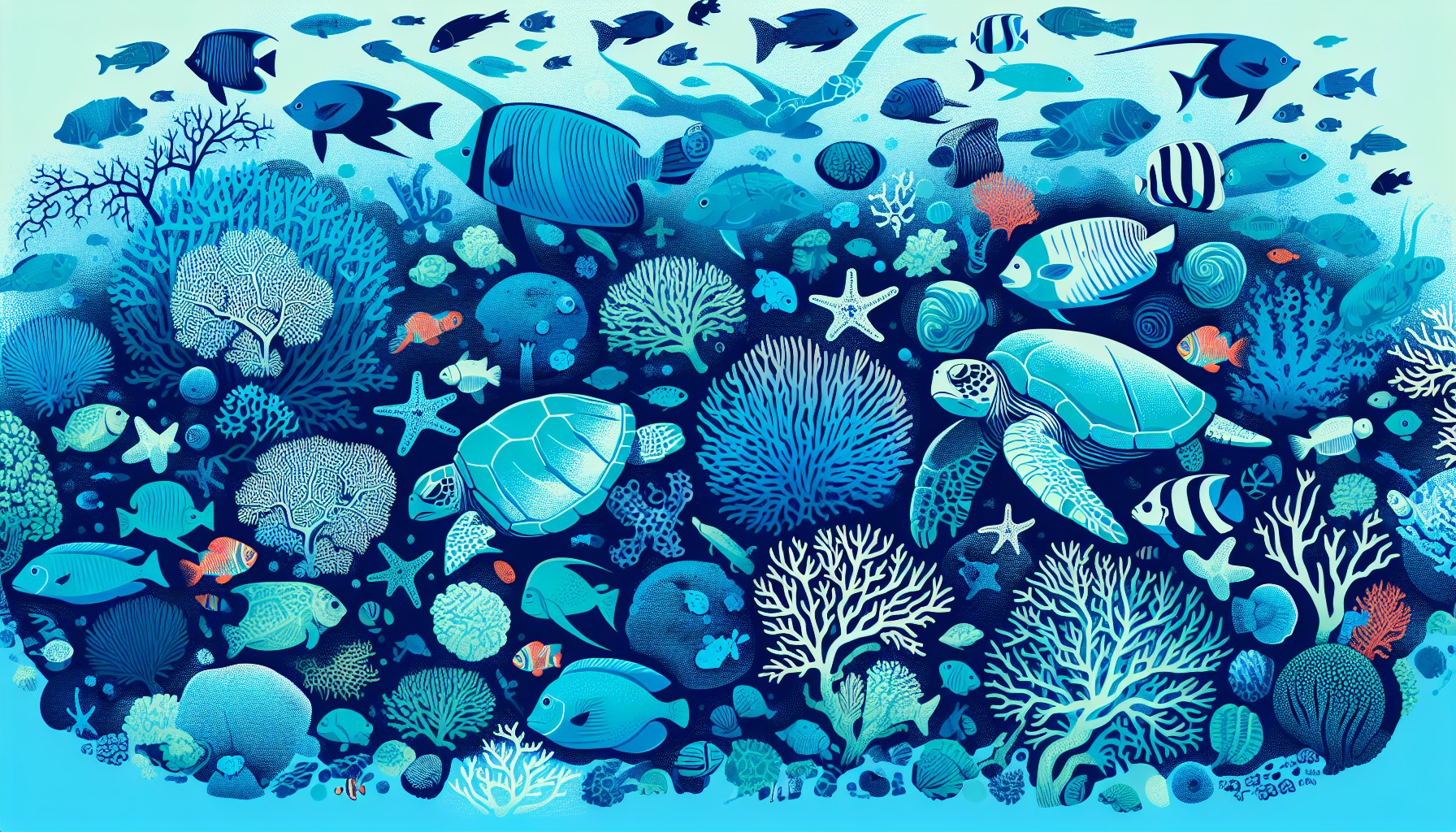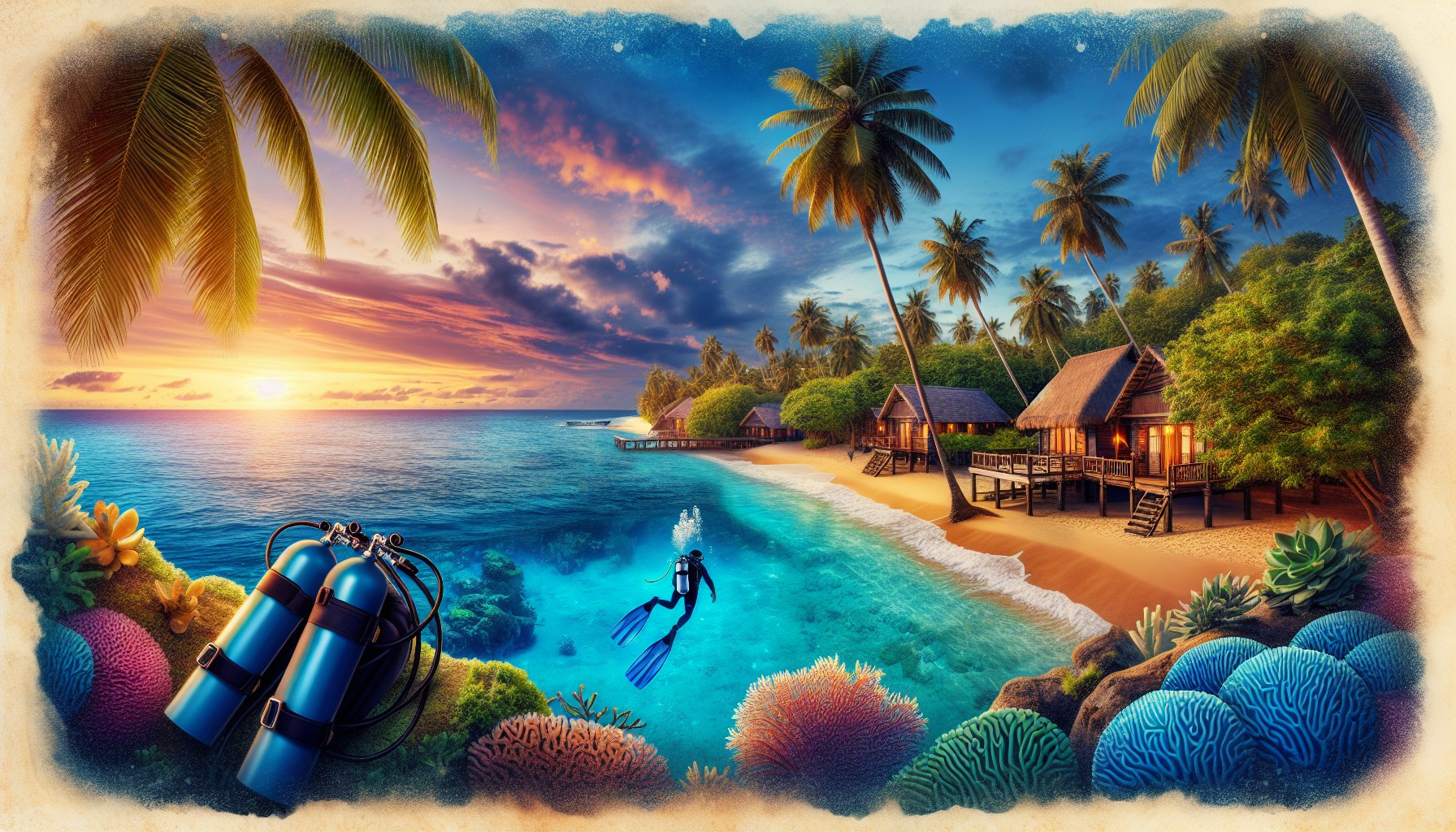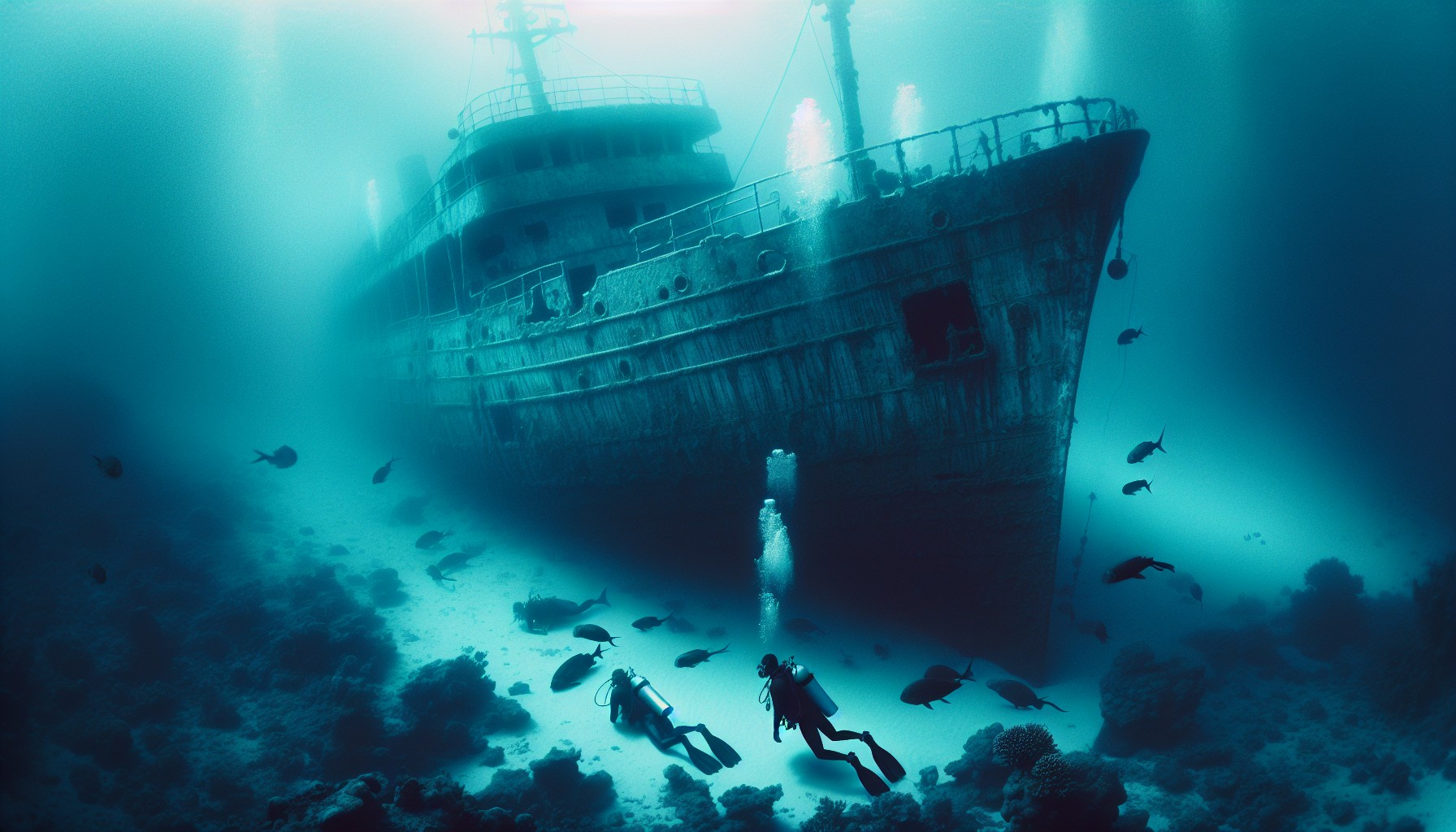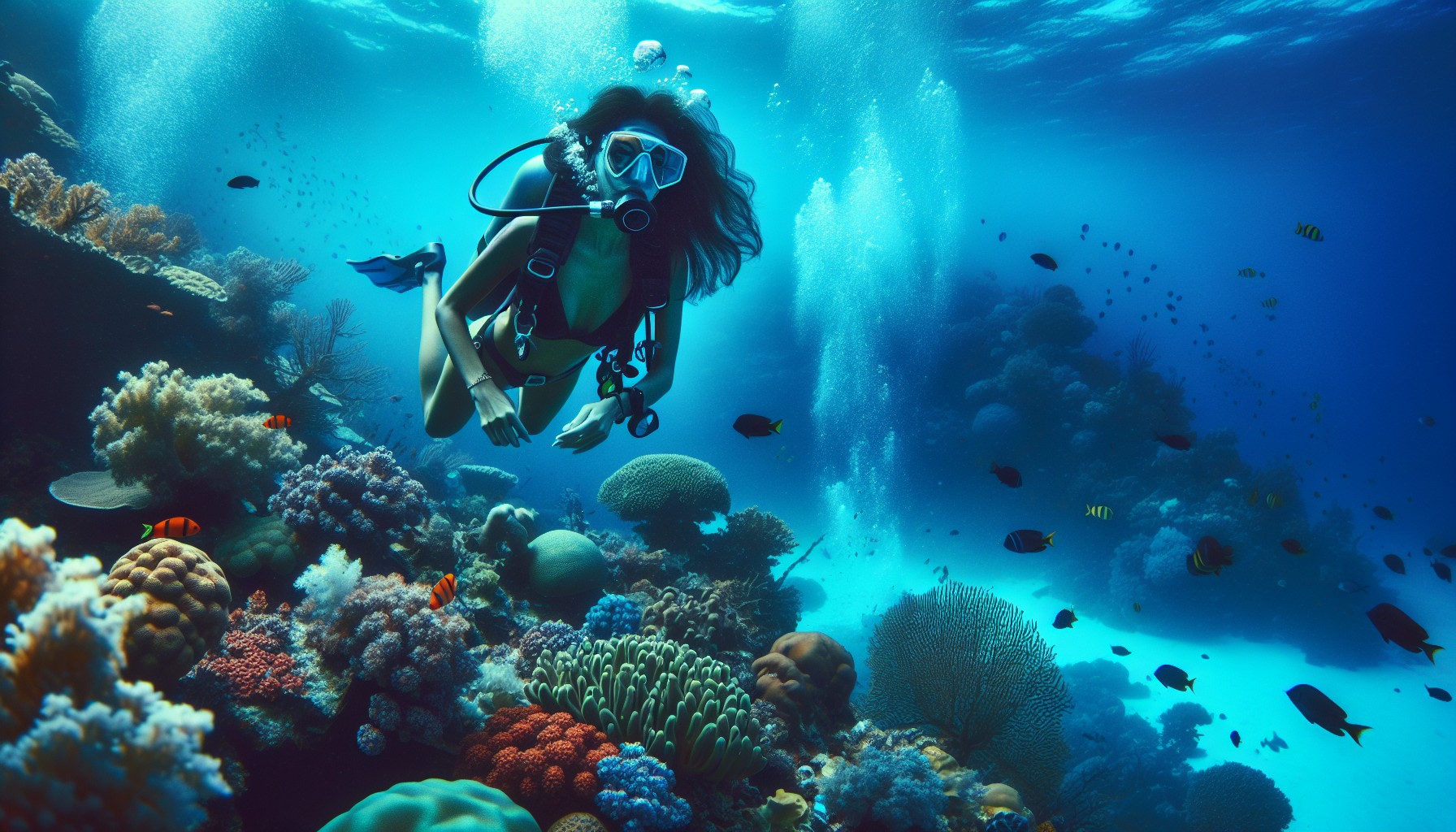Exploring Sri Lanka’s Marine Life
Rich Diversity of Fauna
Sri Lanka, an island lounging like a shy pearl in the Indian Ocean, boasts an amazing cast of marine stars and brackish water residents. With quite the eclectic mix, including many species exclusive only to its freshwater pools and thousands of marine types, this biodiversity throws a big party for the country’s economy and gatecrashes if you don’t invite it. It’s not just the balance of nature; it’s the bread and butter of coastal folk who reel in their livelihood from these waters.
The ocean buffet around here serves marine fish that’re top-notch in nutrients. They’re bigger and pack more protein than their smaller-mouthed freshwater cousins. These lively underwater communities aren’t secret either; they lure scuba fanatics eager to dive beneath and shake fins with varied marine critters.
| Key Marine Species | Type | Commercial Value |
|---|---|---|
| Jacks | Bony fish | High |
| Emperors | Bony fish | High |
| Snappers | Bony fish | High |
| Groupers | Bony fish | Medium |
| Parrotfish | Bony fish | Low |
Peek at this handy table to spot some of the VIP marine species chillin’ around Sri Lanka, laying out just how much they’re worth to the folks keeping the fishing industry afloat.
Commercial Fish Species
Sri Lanka’s underwater realms are bustling with over 100 species of common commercial fish, plus crustaceans like crabs, lobsters, prawns, and good ol’ squids, cuttlefish, and sea cucumbers too. These ocean goodies are swimming in economic importance due to their high market price tags.
The marine fish collection here dances in various categories, showcasing the diversity teeming within these waters:
| Fish Category | Examples |
|---|---|
| Cartilaginous Fish | Hammerhead sharks, stingrays |
| Bony Fish | Swordfish, barracudas |
| Crustaceans | Crabs, lobsters, prawns |
| Molluscs | Squids, cuttlefish |
| Echinoderms | Sea cucumbers |
These categories give a glimpse into the bustling underwater neighborhoods that divers love to explore. If you’re itching for a close-up with such marine wonders, hopping into the waters for scuba diving in Sri Lanka gets you front-row tickets to this aquatic show. Dive resorts all over the place offer a gateway to the primo underwater spots, and you can check ’em out in our guide on Sri Lanka dive resorts.
The kaleidoscope of marine life here makes Sri Lanka a dreamland for scuba heads who’re looking to explore lively underwater locales and say hello to a vibrant marine menagerie.
Threats to Marine Ecosystems
Reef Degradation
Sri Lanka’s coral reefs are taking quite the pounding, and not in a good way. These vibrant underwater gardens are seeing their colours fade because of some less-than-friendly human activities. Folks have been chiselling off chunks of coral to spruce up houses, using them for construction and wall plastering. As if raiding the aquarium wasn’t enough, the aquarium industry is also pinching corals for export. To add insult to injury, some fishermen have taken to using explosives and destructive nets to catch fish, which leaves the fragile coral cringing in the aftermath (FAO).
To top it off, the overenthusiastic use of fertilizers and unsustainable land practices are doing no favours for the reefs. There’s a nasty mix of industrial gunk and sewage sneaking into the ocean, packing a toxic punch and putting the squeeze on marine biodiversity (FAO). Just how bad’s the damage? Check out this breakdown:
| Source of Reef Damage | Percentage of Damage |
|---|---|
| Coral nabbed for construction | 30% |
| Aquarium raiding | 25% |
| Trigger-happy fishing methods | 20% |
| Pollution from farms and factories | 25% |
Unsustainable Practices
But hey, don’t think the trouble stops with the coral. There’s a more extensive issue, as the area’s mangrove forests have dwindled by a staggering 70% since 1915, thanks mostly to agriculture and those not-so-environmentally-conscious shrimp ponds. Mangroves, essential guardians of coastal life, are getting the raw end of the stick (Wikipedia).
Then there’s the issue of turning the ocean into a buffet with no close sign. Overfishing means some fish stocks are heading towards extinction row, throwing nature’s balance off-kilter and causing a ripple effect that hits rural areas with pollution and waste troubles (Wikipedia). Here’s what’s causing waves and not the good kind:
| Unsustainable Habit | What’s Happening |
|---|---|
| Shrimp farming | Destroying natural habitats |
| Overfishing | Fish population nosedive, unbalancing the ecosystem |
| Shoddy waste management | Coastal pollution shenanigans |
| Land grabbing for farming | Mangroves and coasts getting squeezed |
These threats do more than turn the ocean into a less appealing neighbourhood for fish and coral; they also mess with anyone hoping to go scuba diving in Sri Lanka. Recognising these challenges is like pulling up your socks—a necessary first move to safeguard our treasured ocean haven and plan a dive that’s every bit as awe-inspiring as you’d hope.
Conservation Efforts in Sri Lanka
Sri Lanka buzzes with a vibrant marine ecosystem, a lifeline not just for nature itself but also for the folks reeling in the fish or guiding eager tourists. With this double-whammy of importance, conserving Sri Lanka’s seas has become a bit of a national priority. And how do they do it? They’re focusing on a few key projects, particularly looking after those mangrove marvels and hooking up with global pals.
Mangrove Protection
Mangroves are like the unsung heroes of the coastline—quietly keeping shorelines safe and teeming with life. Sadly, they’ve taken a beating, with a jaw-dropping 70% loss since the good old days of 1915. What happened? Well, agriculture and shrimp farms gate-crashed the mangrove party, leaving chaos in their wake.
Fast forward to 2015, and Sri Lanka decided it was time to get serious. The government rolled out laws to protect every last standing mangrove, and they haven’t stopped there. They’re replanting these tenacious trees and working them into strongholds against climate change’s sneaky advances.
| Year | Event |
|---|---|
| 1915 | Mangroves covered the coast fully |
| 2015 | Legal shields set for mangroves |
| Ongoing | Mangrove restoration in action |
Global Initiatives
Sri Lanka isn’t just thinking local. Oh no! It’s got its eyes on the world stage, showing some serious marine mentoring. They’ve jumped into the Global Ocean Alliance’s “30by30” bandwagon, which is a fancy way of saying they aim to save 30% of the oceans by 2030. It’s a bold move, putting them ahead of the pack in Asia when planning how to tackle stuff like undersea cables (United Nations).
Not stopping there, Sri Lanka takes the lead on the Mangrove Ecosystems and Livelihood Action Group (try saying that five times fast) under the Commonwealth Blue Charter. This group brings countries together for some old-fashioned knowledge-swapping. It’s not just government suits doing the work, though. Even diving enthusiasts can make a splash by diving into and supporting these greener efforts. A flourishing undersea life makes every dip into scuba diving in Sri Lanka and stopover at Sri Lanka dive resorts an unforgettable adventure.
These efforts are pretty darn crucial because we want folks down the line to see Sri Lanka’s aquatic wonderland and keep diving tourism bubbling along with sustainable good vibes.
Fisheries Industry in Sri Lanka
Sri Lanka’s fishing biz is a big deal for the country’s cash flow, especially for folks living along the coast. But with all the good stuff comes a bit of a headache, which could mess with not only the economy but also the sea creatures that bring all those scuba fans to town.
Impact of Overfishing
The fish are getting a bit scarce in Sri Lanka, with too much fishing going on. This puts a strain on marine animals and the long-term health of fish populations. The fisheries in Sri Lanka chip in about 2% to the national piggy bank, with four-fifths coming from the coast and the rest from out in the big blue FAO. The push to catch more fish, especially with small boats going after shrimp and tuna, is putting a massive burden on our finned friends.
Here’s a quick look at some of the popular fish and how overfishing is affecting them:
| Fish Species | Current Status | Threat Level |
|---|---|---|
| Tuna | Depleted | High |
| Snapper | Vulnerable | Moderate |
| Grouper | Overfished | High |
| Mackerel | Stable | Low |
Sorting out the overfishing mess isn’t just about saving the fish; it’s about making sure future divers get to see Sri Lanka’s sea wonders.
Modernization and Challenges
Sri Lanka’s fishing game has been leveled up in recent years. Traditional methods are mostly replaced by small operations using new tricks and tech to catch more fish (FAO). While this might pack more fish into nets, it sparks worries about keeping things green and ocean-friendly.
And that’s not the only curveball—there’s a shortage of people to do the fishing job thanks to the small local workforce, a hurdle the Maldives knows all too well (FAO). Seasonal storms, especially the Northeast and Southwest monsoons, throw a wrench in the works too, messing with catch rates and fishing schedules.
Improving the fishing hustle without breaking the planet is something both fishermen and the rule-makers need to nail down. By smart fishing and looking after the ocean, Sri Lanka’s underwater playground can stay bursting with life. For divers heading over, there are options to check out spots scuba diving in sri lanka and Sri Lanka dive resorts that make sure they’re treading lightly on the sea.
Marine Spatial Planning
Sri Lanka’s ocean is like a stunning treasure chest of marine life that needs some solid management for a sustainable future. Marine Spatial Planning (MSP) is the game changer here, allowing us to have our fish and eat it too by making savvy use of the waters while keeping the sea critters happy and healthy.
National Framework
Sri Lanka’s drawing some lines on the water map, carving out a whopping 32,550 square kilometres to guard its blue pride—pretty much 6.3 per cent of its seabound riches. This is about backing conservation, letting folks wander wisely in the wet ‘n’ wild, and making sure fishy business is done right (United Nations).
The national plan ropes in everyone from head honchos to the local fishmongers, making sure every Tom, Dick, and Mary has their two cents in. This teamwork helps dodge the drama over who gets what from the sea, while shining the spotlight on eco-tourism for those diving fanatics ready to check out Sri Lanka’s lively underwater scenes.
| Strategic Objective | Description |
|---|---|
| Conservation of Marine Biodiversity | Keeping our finned and shelled pals safe for the planet’s harmony. |
| Sustainable Fisheries Management | Getting fish on the plate without gaming fishy extinction. |
| Promotion of Marine Tourism | Nudging tourists to tread lightly on marine adventures, boosting local wallets. |
| Community Engagement | Letting locals steer the wheel in marine resource matters. |
Sustainable Resource Management
Balancing the love for fish sticks with ocean care is the name of the game in MSP. Sri Lanka is rubbing shoulders with other nations in the Mangrove Ecosystems and Livelihood Action Group under the Commonwealth Blue Charter. It’s all about swapping smarts, tricks of the trade, and setting up rock-solid foundations for cooperation (United Nations).
Efforts are grounded in protecting sea life homes while sticking to fishing rules that keep both fish stocks and local fishers afloat. Like, creating zones where fishing takes a backseat can give fish a fighting chance to come back strong, which divers with a love for bustling fish-spotting scenes will totally cheer for.
Sri Lanka’s underwater is jam-packed with everything from neon corals to cool shipwrecks, and making sure they’ve got a sustainable future is a must. This way, those wet wonders stay open for divers and ocean fans long down the line. For those wanting a piece of the underwater action, checking out wreck diving in Sri Lanka could just be the highlight splash of their trip.
Boosting Sustainable Livelihoods
Sri Lanka’s coastal waters aren’t just a splashy photo op—they’re a lifeline. These marine habitats aren’t just brimming with species diversity, they’re the bread and butter for nearby communities. So we gotta make sure they’re not just around for insta-moments, but sustainable for the long haul, keeping both the locals and the environment happy.
Baby Fish and the Circle of Life
Saving baby fish ain’t just a fishy business—it’s vital. We all want plentiful fish suppers, but overfishing is fast emptying the ocean plate. Sri Lanka’s taking a stand, letting the little ones grow up so they can keep the fish stock alive and kicking. It’s like fish daycare—they grow up, make more fish babies, and ensure local communities won’t run out of catch of the day.
Think of juvenile fish conservation as a strategy to keep the sea’s rhythm in check. This means designated fishy no-go zones, fishing breaks that give baby fish a chance to grow, and schooling fishers on why letting juniors swim a bit longer matters.
| Initiative | Description |
|---|---|
| No-Fish Zones | Areas where it’s a bad idea to catch babies. |
| Fishing Time-Outs | Downtime to let fish grow up. |
| Fish Schooling | Educating fishers on the “why” and “how” of baby fish protection. |
Sharing the Sea Fairly
Everyone deserves a piece of the ocean pie. Fair sharing of the sea’s bounty is key for communities who count on fishing to make ends meet. Getting everyone on the same page—locals, officials, and NGOs—is how we make sure all nets come back full.
When all players in the fisheries game have the gear and chances they need, we can cut down on squabbles over who gets to fish where. Pairing age-old fishing traditions with some eco-friendly smarts lets locals stick to what they know while doing right by Mother Nature.
| Strategy | Goal |
|---|---|
| Grassroots Engagement | Giving locals a say-so. |
| Green Fishing Skills | Training for earth-friendly fishing. |
| Peace over Plates | Ways to kiss and make up over fish fights. |
These tactics do more than keep Sri Lanka’s waters teeming with life—they build strong, thriving communities by the sea. And let’s face it, knowing these efforts makes snorkeling in Sri Lanka’s underwater wonderland even better. Besides diving stories, check out our articles on scuba adventures in Sri Lanka and exploring sunken treasures in Sri Lanka.



